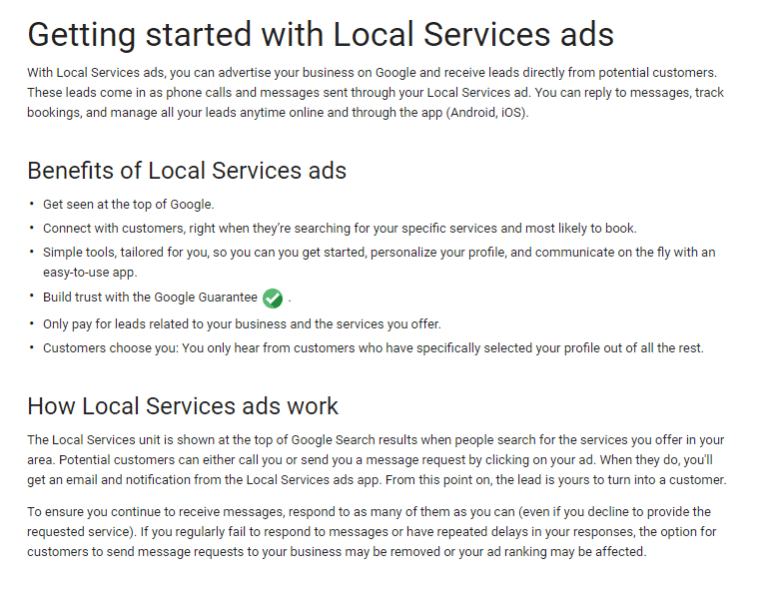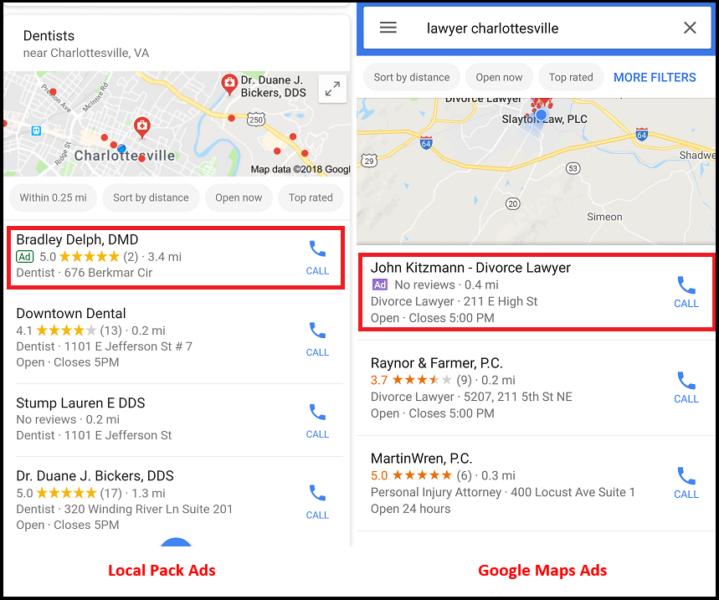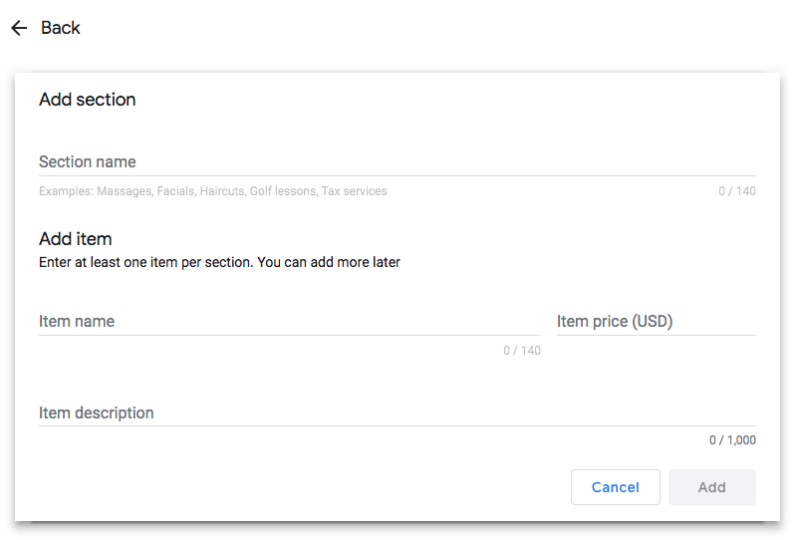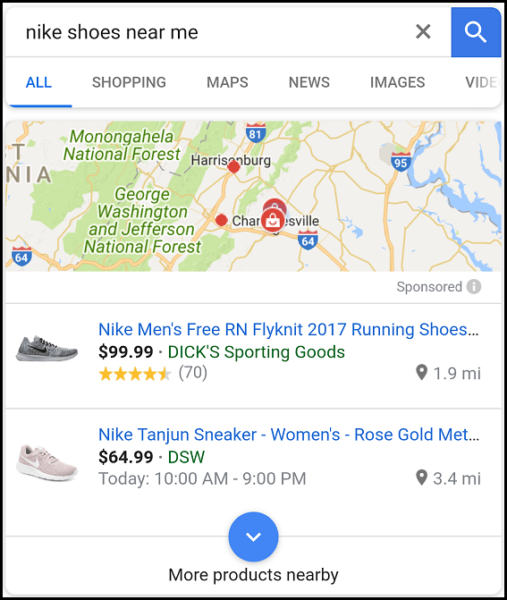 Some brick-and-mortar advertisers logged into accounts in late February to find new campaigns named “Local Search Ads Experiment Campaign” populated in AdWords.
Some brick-and-mortar advertisers logged into accounts in late February to find new campaigns named “Local Search Ads Experiment Campaign” populated in AdWords.
Google has confirmed that these campaigns are currently running for select advertisers only and promote verified business locations in local search results in both Google Search and maps without using keywords.
Instead of keywords, Google uses Google My Business (GMB) information such as location address and location category to trigger relevant results. Advertisers cannot request to take part in the experiment at this time.
While these campaigns are still in very early days, how should advertisers think about this recent development?
Locally focused optimizations
Right now, most brick-and-mortar advertisers only have one lever available to control when ads show up in Google maps searches or in local ad displays directly on Google.com: the activation or deactivation of location extensions.
Local Services is another paid local format that is managed through a dedicated local services portal, but it is currently limited to a handful of home service industries in select US cities. Thus, location extensions are driving local ad results for most brick-and-mortar brands in most locations at this point.

Location extensions have existed for years and are traditionally added to AdWords campaigns for all brick-and-mortar advertisers as a best practice for gaining additional search engine results pages (SERP) real estate and giving searchers useful information on store locations and hours.
Over the past couple of years, Google has used these extensions and active keywords to trigger ad units for local searches in maps and the local pack.

While there’s no clean way to segment maps traffic from other AdWords traffic at this time, click type reports feature “get location details” clicks, which essentially all come from maps, according to Google.
The share of traffic coming from this click type increased meaningfully through mid-2017, particularly for brand keywords, but has remained roughly steady over the last three quarters.

Maps and other locally focused units like ads in local packs are grouped in with Google.com rather than the search partner network, and thus, all campaigns with location extensions are automatically opted into showing maps ads. Thus, advertisers have no ability to manage this traffic beyond turning it on or off with the addition or subtraction of location extensions on campaigns.
The possibility of new local-only campaigns gives hope for being able to manage these searches separately from traditional Google searches. While the lack of keywords does cause some concern over lack of control, I’d hope advertisers will at least be able to set negative keywords for these campaigns to trim out irrelevant queries if or when Google moves past the experimental phase.
Performance doesn’t currently populate in the user interface (UI), and Google plans to communicate results directly to advertisers in time, so it’s unclear what kind of queries are triggering traffic and how performance looks at this stage.
However, Google does appear to be equipping Google My Business (GMB) with new features that might help it trigger relevant ad results through these campaigns, as judged by two recent updates.
GMB gets new bells and whistles
In the month following the release of these experiment campaigns, Google made two notable changes to Google My Business.
The first came with the introduction of business descriptions within GMB, allowing 750 characters with which to briefly inform customers about what a particular business offers and any other defining
facts about the business. These should not include promotions, universal resource locators (URLs) or hypertext markup language (HTML) code.
The second update gave businesses the ability to specify any services they provide, creating a structured combination of service name, item name within that service, item price and item description. While GMB menus have existed for restaurants since February 2018, they are now available for businesses in a host of other industries as well.


With both of these changes, in a host of industries, Google now has additional signals to use in triggering ads based on GMB information. Further, in the case of the services update, it now has structured pricing information for services which might be incorporated into both paid and organic listings.
Alternative motives at play?
The lack of keywords in local campaigns offer advertisers the possibility of being able to target local searchers without relying on existing campaigns and active keywords. This could be a nice advancement for brands looking to monitor and control this traffic better than the current setup allows.
The recent updates to Google My Business give business owners the ability to provide important information to Google, which should help Google in finding relevant local results for searchers in both Google Maps and on Google.com. It should also give users better reference points to go on in determining which local business to use.
Looking over at the local experiment campaigns, however, it seems like at least part of the motivation here might be to better equip AdWords with the information it needs to match ads with relevant searches sans keywords.
Maybe these local experiment campaigns will fall by the wayside, as plenty of Google tests and experiments do, and the GMB updates are really just focused on giving users more information and better results. It wouldn’t surprise me if there are alternative motives at play.
Regardless of the implications for monetization, optimizing these new details in GMB is likely to be important for ranking for local searches. Much like proper product feed management gives Google product information to help a brand rank well in Google Shopping results, the structured data associated with services in GMB is likely to require similar optimization.
Imagine typing in “oil change near me” and returning a local pack complete with oil change pricing information for nearby automotive repair shops. This is already happening with product-specific searches through local inventory ads, a variation of Google Shopping ads which includes information about when a product is available at a nearby store.

Conclusion
Whether such listings are paid or organic, I think it makes total sense for Google to start packing this kind of information into the Local Pack for more searches than just those specifying products. The additional information Google is now set to glean from GMB for local businesses in a variety of industries is likely to help it do just that.
Contributing authors are invited to create content for Search Engine Land and are chosen for their expertise and contribution to the search community. Our contributors work under the oversight of the editorial staff and contributions are checked for quality and relevance to our readers. The opinions they express are their own.



